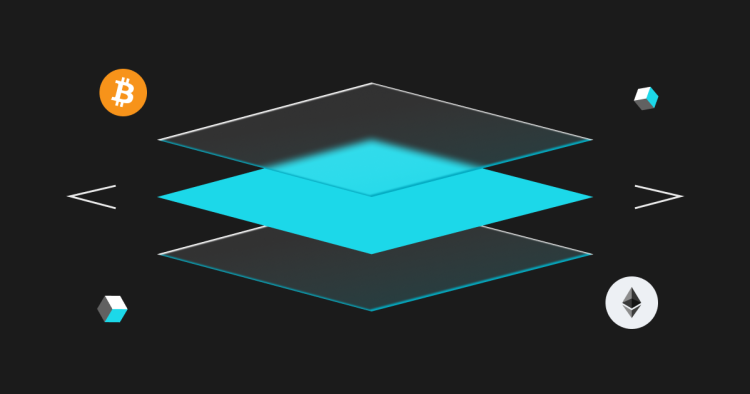Introduction
Blockchain has come a long way since Bitcoin introduced the world to decentralized digital currency. While first-generation blockchains like Bitcoin revolutionized trustless peer-to-peer transactions and second-generation platforms like Ethereum introduced programmable smart contracts, both faced two significant limitations: scalability and energy efficiency.
Enter the third generation of blockchain technology, purpose-built to overcome these challenges. These next-gen platforms focus on performance, sustainability, and interoperability—laying the foundation for mass adoption of blockchain-powered applications across industries.
This article explores how third-generation blockchains solve scalability and energy inefficiency through innovative consensus mechanisms, architectural improvements, and advanced cryptographic techniques.
The Problems: Scalability and Energy Inefficiency
1. Scalability Limitations
Early blockchains suffer from low transaction throughput:
- Bitcoin processes ~7 transactions per second (TPS)
- Ethereum (pre-upgrade) handles ~15–30 TPS
These rates are far below traditional systems like Visa, which processes thousands of TPS.
Consequences:
- Network congestion
- High transaction fees
- Poor user experience for dApps and DeFi
2. Energy Consumption
Proof of Work (PoW), the consensus algorithm used by Bitcoin and Ethereum 1.0, requires vast computational power, leading to:
- Excessive electricity usage
- High environmental impact
- Scalability limitations tied to energy costs
What Is Third-Generation Blockchain?
Third-generation blockchains refer to platforms that address the “Blockchain Trilemma”—balancing decentralization, security, and scalability—while improving environmental sustainability.
These blockchains aim to support:
- High throughput
- Low transaction costs
- Eco-friendly operations
- Cross-chain compatibility
- Widespread developer adoption
Popular third-gen blockchains include Cardano, Polkadot, Algorand, Avalanche, NEAR Protocol, Tezos, and Cosmos.
How Third-Gen Blockchains Solve Scalability
1. Proof of Stake (PoS) and Variants
PoS replaces energy-intensive mining with validator-based consensus:
- Staking: Validators lock up tokens to secure the network.
- Incentives: Honest behavior is rewarded; bad behavior results in slashing.
- Energy Efficiency: PoS consumes ~99.9% less energy than PoW.
Examples:
- Ethereum 2.0 transitioned to PoS.
- Cardano uses Ouroboros, a peer-reviewed PoS protocol.
- Tezos uses Liquid PoS for flexible participation.
2. Sharding
Sharding divides the blockchain into smaller units (shards), each processing its own set of transactions in parallel.
- Increases throughput exponentially
- Reduces network congestion
- Allows horizontal scalability
Examples:
- NEAR Protocol uses Nightshade, a dynamic sharding model.
- Ethereum plans to implement sharding in its roadmap.
- Zilliqa introduced sharding early among public chains.
3. Layer 2 Solutions
Layer 2 refers to protocols built on top of Layer 1 blockchains to improve scalability:
- Rollups (e.g., zkRollups, Optimistic Rollups) batch multiple transactions into one.
- State channels allow off-chain interactions settled on-chain only when necessary.
Examples:
- Arbitrum and Optimism scale Ethereum smart contracts.
- StarkNet and zkSync offer scalable, zero-knowledge-based rollups.
4. Directed Acyclic Graphs (DAGs)
DAG-based blockchains don’t use blocks in a linear sequence. Instead, transactions are linked in a web-like structure, enabling massive parallelization.
Examples:
- IOTA uses the Tangle
- Nano and Fantom use DAG for feeless and fast transactions
5. Customizable Subnets and Sidechains
These allow specific applications or projects to operate on their own mini-blockchains:
- Polkadot uses parachains
- Avalanche supports customizable subnets
- Cosmos supports app-specific chains via the Cosmos SDK
This architecture increases efficiency without overloading the main chain.

How Third-Gen Blockchains Improve Energy Efficiency
1. Abandoning Proof of Work
Nearly all third-gen blockchains use energy-efficient consensus algorithms like:
- Proof of Stake (PoS)
- Delegated Proof of Stake (DPoS)
- Byzantine Fault Tolerant (BFT) variants
- Proof of History (Solana)
These drastically reduce energy use without compromising security.
Case in Point:
- Cardano claims it uses less than 0.01% of Bitcoin’s energy.
- Tezos completes transactions using less energy than a Google search.
2. Carbon Neutral and Green Initiatives
Several third-gen projects are actively focused on environmental impact:
- Algorand is carbon-negative, buying offsets and running low-power nodes.
- NEAR Protocol partners with South Pole to maintain carbon neutrality.
- Chia Network uses Proof of Space and Time—trading energy for storage capacity.
3. Lightweight Node Infrastructure
Next-gen platforms are designed to run validator or full nodes on basic hardware:
- Reduces energy consumption
- Increases decentralization by allowing more participants
- Makes running a node accessible to a wider community
Examples of Third-Generation Blockchain Innovations
| Blockchain | Key Feature | Scalability Approach | Energy Efficiency |
|---|---|---|---|
| Cardano | Peer-reviewed PoS (Ouroboros) | Hydra Layer 2, Sidechains | Highly efficient PoS |
| Polkadot | Cross-chain parachain architecture | Parallel execution | Nominated PoS (NPoS) |
| Algorand | Pure PoS with fast finality | High TPS, instant confirmation | Carbon-negative |
| Avalanche | Subnets for application-specific chains | Parallel blockchains | Low-power consensus |
| NEAR Protocol | Nightshade sharding | Asynchronous sharding | Climate-neutral |
| Tezos | On-chain governance and upgrades | Liquid PoS | Energy-efficient and green |
Conclusion
The third generation of blockchain technology represents a leap forward in solving two of the industry’s biggest limitations: scalability and energy inefficiency. Through PoS-based consensus, sharding, DAG structures, and other novel techniques, these modern blockchains enable faster, cheaper, and greener decentralized networks.
As adoption accelerates and more real-world applications are built on these platforms, third-gen blockchains are paving the way for a sustainable and scalable decentralized future—one that is ready to support everything from global finance to gaming, supply chains, identity systems, and beyond.

















































